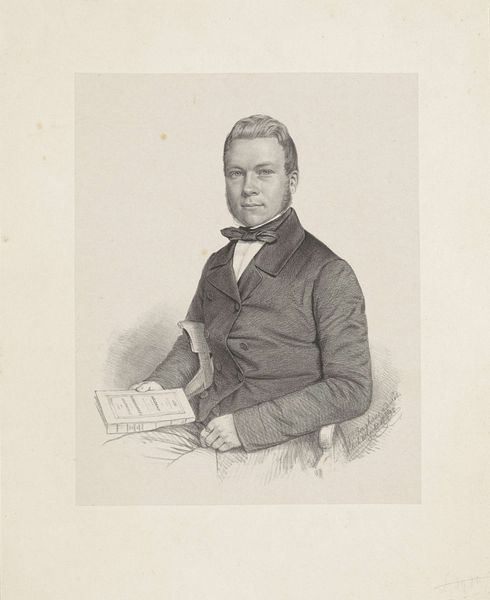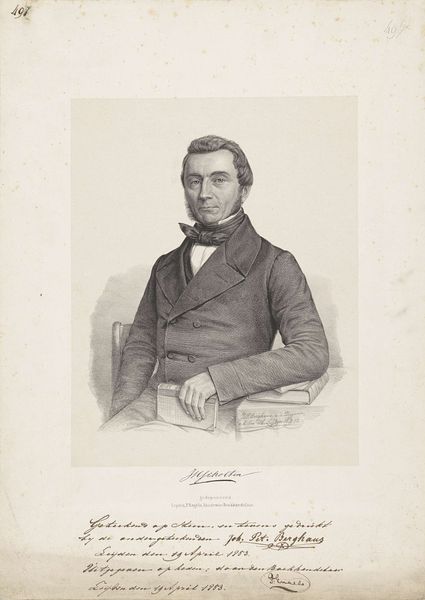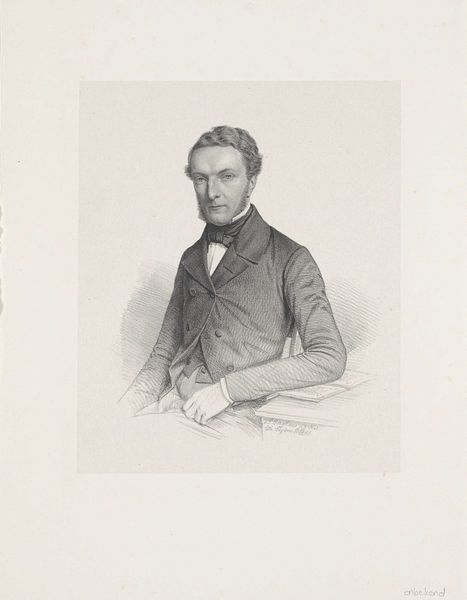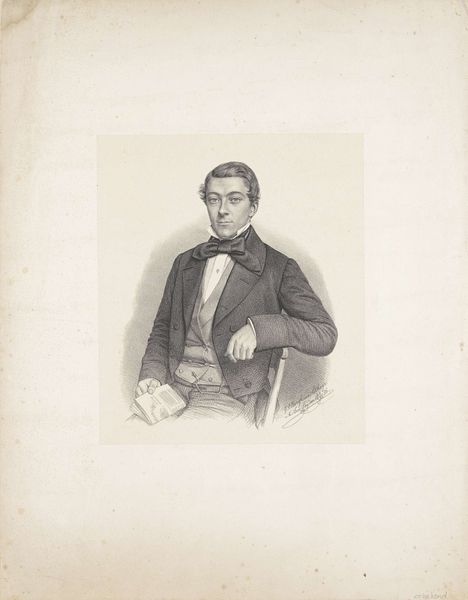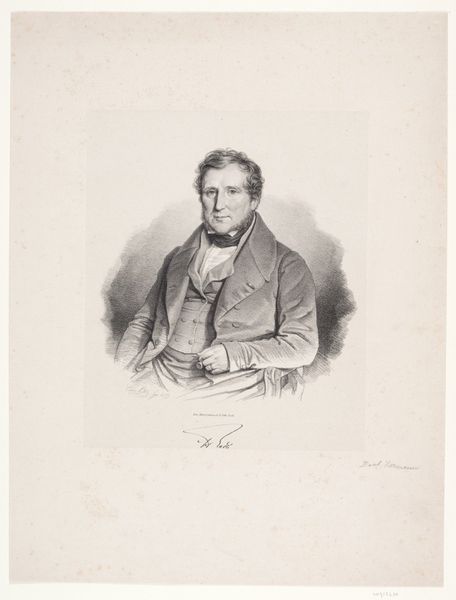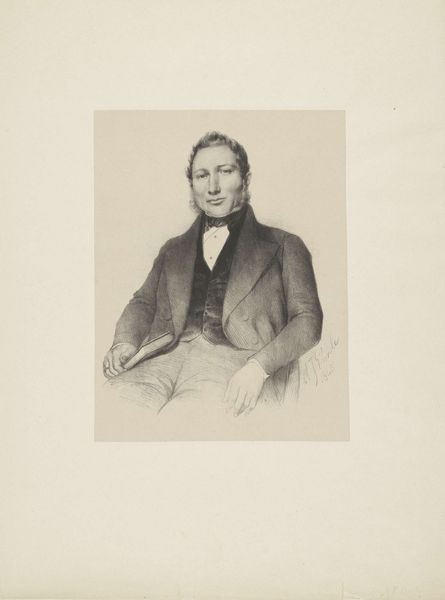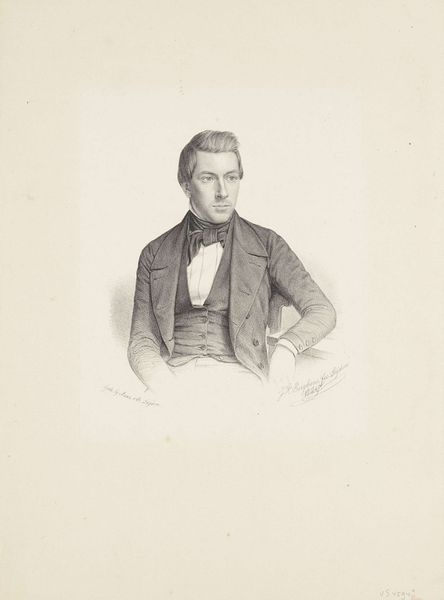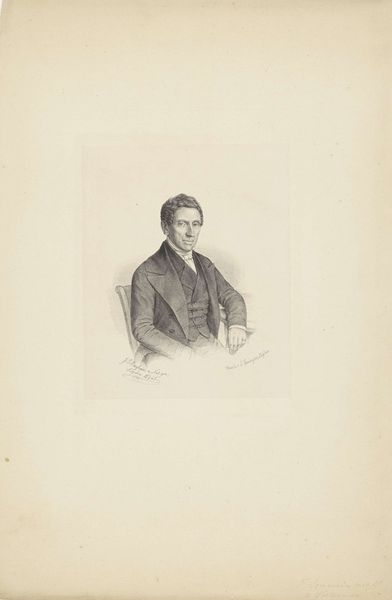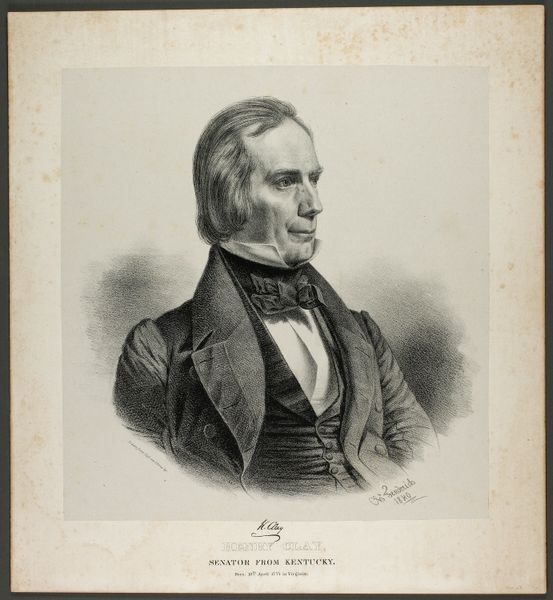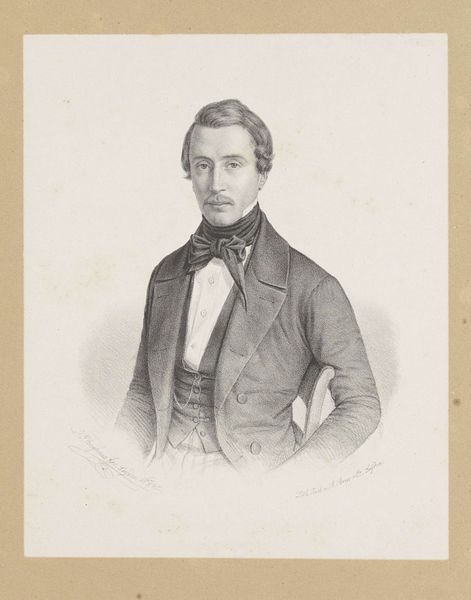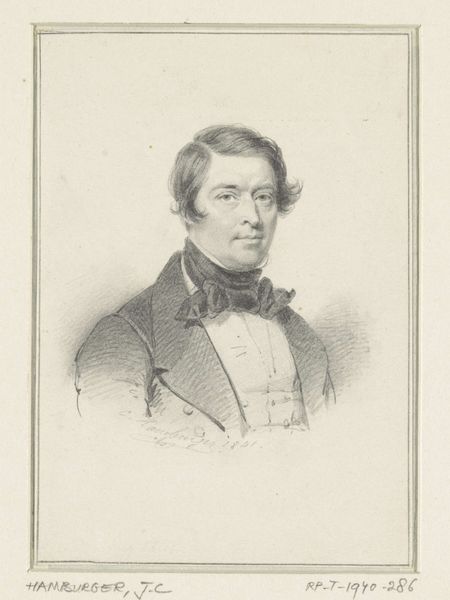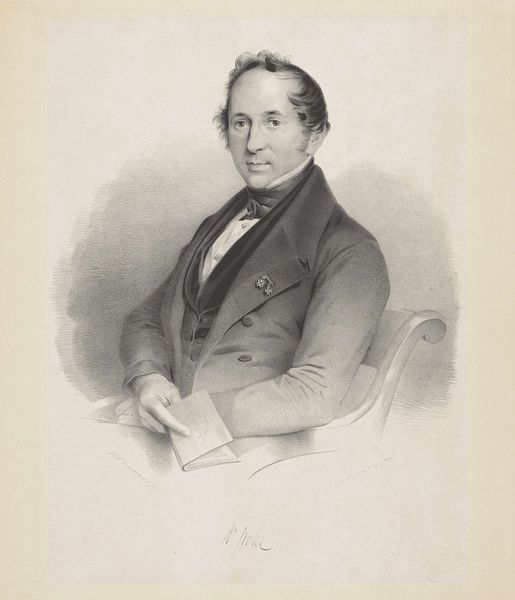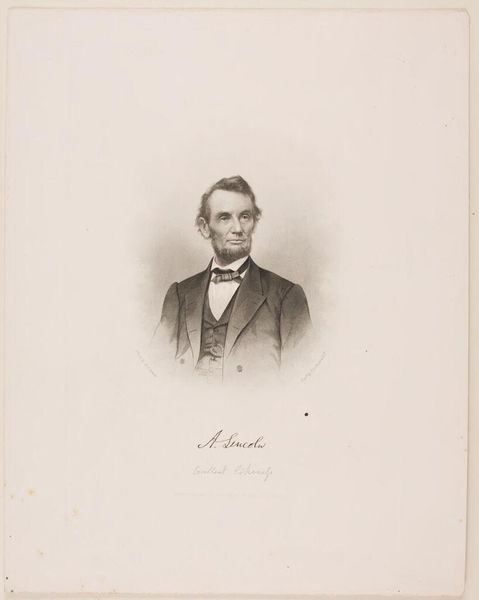
drawing, graphite
#
portrait
#
drawing
#
charcoal drawing
#
pencil drawing
#
graphite
#
portrait drawing
#
academic-art
#
graphite
#
realism
Dimensions: height 505 mm, width 360 mm
Copyright: Rijks Museum: Open Domain
Editor: Here we have "Portret van P. Epkema" by Johann Peter Berghaus, likely from the mid-1850s. It's a graphite drawing. It strikes me as incredibly formal and perhaps even a little stiff. How do you interpret this work? Curator: Well, first, it’s important to remember the context. Mid-19th century portraiture was deeply entwined with notions of bourgeois identity and status. This isn't just a likeness; it's a carefully constructed presentation of a man, P. Epkema. Do you see how the artist uses precise lines and shading to convey respectability and perhaps even a certain level of authority? Editor: Yes, I see that. His clothing, the way he holds himself... it all seems very deliberate. But is there something more beyond just representing status? Curator: Absolutely. Consider the limitations placed on artists, and sitters. Photography was becoming increasingly popular, threatening the traditional role of portraiture. Artists like Berghaus had to negotiate this shift, often clinging to established conventions while trying to assert the value of their craft. How does the use of graphite contribute to the sense of realism, but also something else, something uniquely artistic, do you think? Editor: I think the detail in graphite shows craftsmanship, while also acting as a commentary on the rapidly emerging age of photography. Almost like it's showing why portrait drawing remains important! Curator: Precisely! This work also sparks a broader discussion about power, representation, and the gaze. Who gets to be memorialized in art, and what does that say about societal values? The subject is presented through the vision of the artist. Editor: I hadn't considered the social commentary aspect so much. Thank you! I will remember that for my paper. Curator: It's been enlightening to re-examine this portrait. It underlines that art isn’t created in a vacuum, and is so tied into historical issues.
Comments
No comments
Be the first to comment and join the conversation on the ultimate creative platform.
